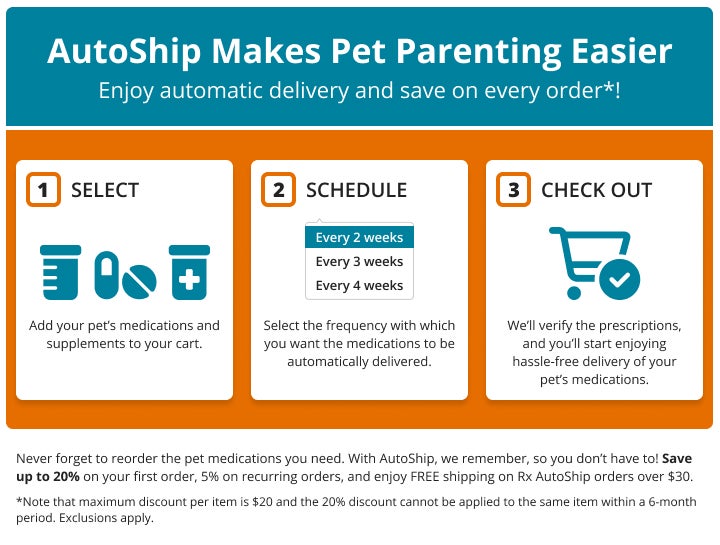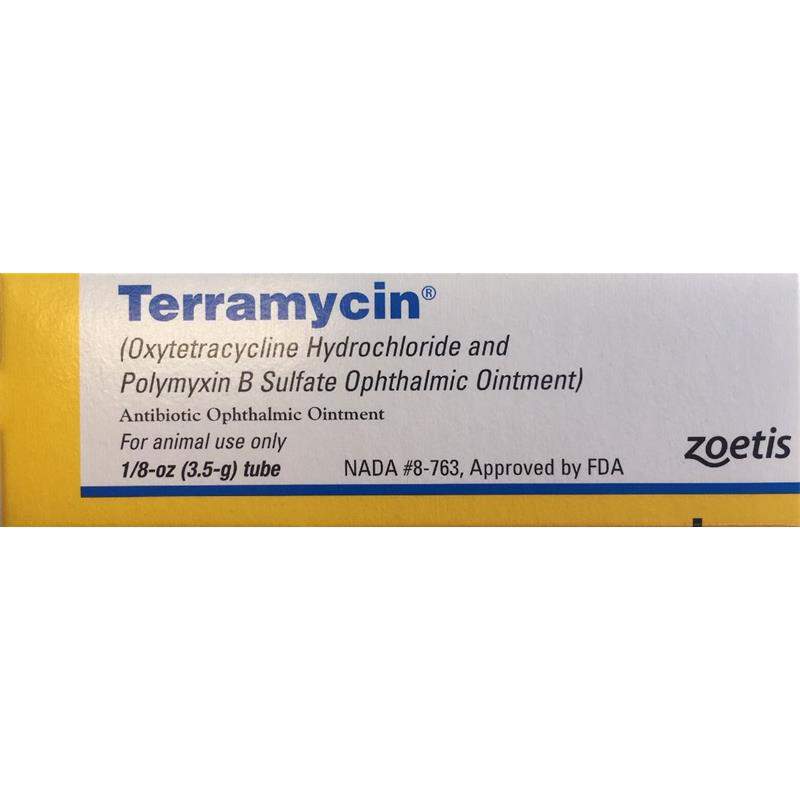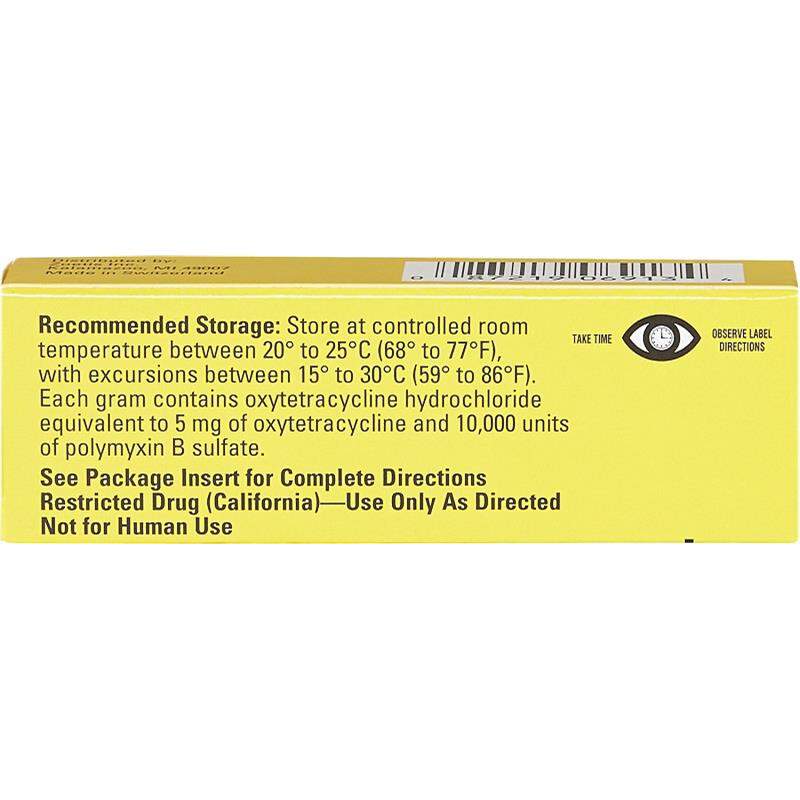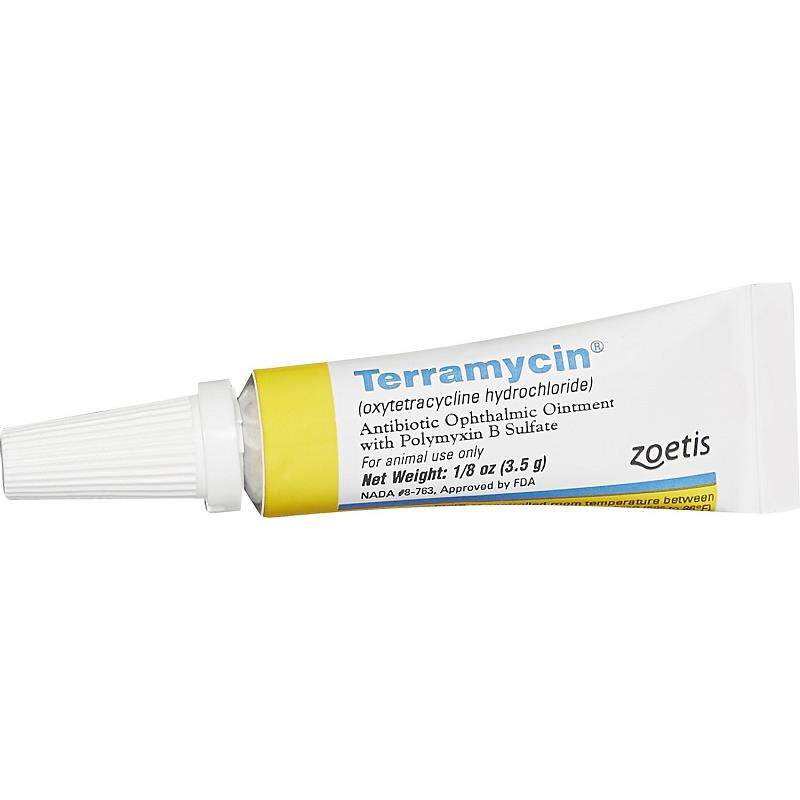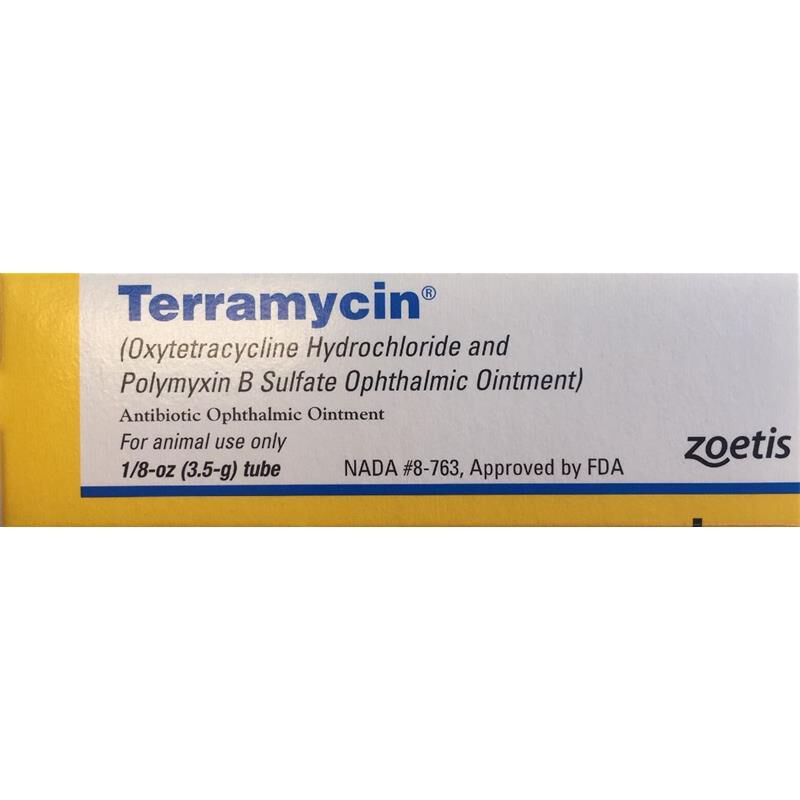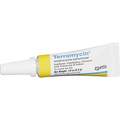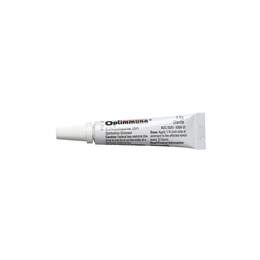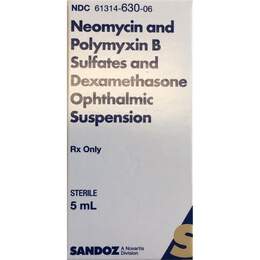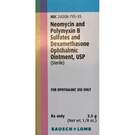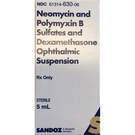

- Save on your Autoship
- Hassle-free: Easily Skip or Change Shipment Dates.
- Commitment-free: Cancel anytime
- Free Shipping.
With AutoShip, we remember so you don’t have to! Learn more
- Can treat ocular infections that are superficial or due to organisms that are susceptible
- Treats infections including conjunctivitis, corneal ulcer, or pinkeye
Always talk to your pet's veterinarian regarding any negative side effects your pet may experience.
If you’ve ever had pink eye or conjunctivitis, you know how painful and annoying it can be. You want relief, and you want it fast. The same goes for your pet. In addition to being painful and uncomfortable, conjunctivitis can cause permanent damage to your pets’ eyes if left untreated.
What Is Conjunctivitis?
Conjunctivitis, often called pink eye, is an infection in the conjunctiva, the thin membrane that works as a protective barrier against foreign objects and infections, similar to the lining of the mouth or nose. Conjunctivitis occurs when the eye becomes infected and inflamed, causing discharge and discomfort. The condition is often referred to as pink eye because it causes the eyes to become reddened or pink.
The Benefits of Terramycin
Bright yellow in color, Terramycin (oxytetracycline HCl) is an antibiotic that possesses powerful antimicrobial activity. One of the most versatile broad-spectrum antibiotics, it is effective for treating gram-positive and gram-negative bacteria, spirochetes, rickettsiae, aerobic and anaerobic, and some of the larger viruses.
The ointment also contains polymyxin B sulfate, a mildly antifungal, fast-working bactericide. It is very effective against gram-negative bacteria. The synergistic effect of Terramycin and polymyxin work together to increase their antibacterial power.
How Does Terramycin Work
The active ingredient in Terramycin is oxytetracycline hydrochloride, an antibiotic used in pets and people. It works by blocking the proteins that the bacteria need to replicate. It also includes polymyxin derived from Bacillus polymyxa, a gram-positive bacteria that fix nitrogen and works rapidly against gram-negative bacteria. In addition, research suggests that polymyxin B sulfate is effective as an antifungal ingredient.
What Causes Pink Eye in Dogs, Cats, and Horses?
Conjunctivitis in dogs and horses is most often caused by allergies but can also be caused by dry eye, surface irritants, or infection.
Cats, on the other hand, are usually caused by a surface infection from bacteria or by feline herpesvirus-1. Feline herpes virus is spread from cat to cat through nasal discharge and other bodily fluids. The virus affects 80% of cats and often lies latent on the corneal surface or nervous system. During periods of stress, the cats’ body, just like ours, releases cortisol, and the herpes virus emerges and can cause pink eye, dry eye, and corneal ulcers.
Most pets recover fully from conjunctivitis. If the disease recurs and becomes chronic, it can lead to eyelid problems that need surgery or scarring across the surface of the eye that could affect your cat’s vision.
Symptoms of Pink Eye in Dogs
Conjunctivitis usually involves both eyes, but in some conditions, it may only affect one eye. Common symptoms of conjunctivitis include:
- Swelling or redness around the eyes (most common)
- Cloudy, yellow, or greenish discharge from the eyes
- Excessive blinking or squinting
- Sneezing or coughing
Causes of Conjunctivitis in Dogs
There are several causes of conjunctivitis in dogs, including:
- Canine distemper and other viral infections
- Allergies
- Autoimmune disorders
- Plasma cell conjunctivitis (German Shepherds)
- Other Breed-associated conditions
- Tumors of the conjunctiva and eyelids
- Keratoconjunctivitis sicca (tear film deficiency) or dry eye
- Eyelid abnormalities and eyelash disorders
- Inflammation of the tissues around the globe of the eye caused by obstructed tear ducts
- Irritation or trauma caused by foreign bodies, environmental pollutants, or smoke
- Glaucoma, ulcerative keratitis, anterior uveitis, and other eye disorders
Symptoms of Pink Eye in Cats
How do you know if your cat has pink eye? Keep an eye out for the following symptoms:
- Red, swollen, or “meaty” eye tissue
- Frequent squinting
- Excessive blinking
- Fluid build-up in the eye
- Excessive tear production of eye discharge
- Blocked tear duct
- Sneezing, coughing, or a runny nose
Symptoms of Pink Eye in Horses
The most common symptom of conjunctivitis in horses is inflamed red or pink eyes. Other symptoms may also be present, including:
- Eye discharge
- Shaking the head
- Depression
- Crusty eyes that are unable to open
- Discomfort or pain associated with the eyes
Conjunctivitis in horses can be either bacterial or viral. In addition, it can be caused by eye conditions such as:
- Glaucoma
- Cataracts
- Equine corneal ulcers
- Optic nerve disease
- Uveitis
- Diseases of the visual cortex
- Diseases of the retina
Or environmental issues such as:
- Allergens
- Dust particles
- Discharge from the nose and sinuses
- Upper respiratory tract infections
- A scratched cornea that becomes infected
- Systemic viral illnesses
If your dog, cat, or horse shows signs of conjunctivitis, even if the symptoms are mild, contact your veterinarian as soon as you can. Untreated conjunctivitis can lead to permanent damage. Animals allergic to doxycycline should not be treated with Terramycin.
How to Administer Terramycin
Terramycin comes in a sterile tube with an angled tip. The tip should not be touched directly on your pet’s eye or by your fingers to ensure the medication is not contaminated. Sterile gloves are recommended when using this medication. Apply a thin layer on the inside of your pet’s lower eyelid, as directed by your veterinarian. Wash your hands after applying.
Your veterinarian will give instructions on how often to apply based on your pet’s specific needs. If you see any symptoms of allergy or any side effects that concern you, call your veterinarian immediately.
Precautions You Must Take
Terramycin kills bacteria, but it is not discriminatory in nature, which means it kills beneficial bacteria in your pet’s digestive tract as well as harmful ones. It’s critical to give your pet probiotics along with or after being treated with Terramycin to keep or restore the bacterial balance in your pet’s gut.
In addition, there is a risk of interaction when Terramycin is given with antacids. In addition, this drug should not be given to dogs that don’t have their permanent teeth and pregnant dogs. Although pets generally respond well to Terramycin, it’s important to stop giving it to any pet that has signs of allergic reaction to the drug.


